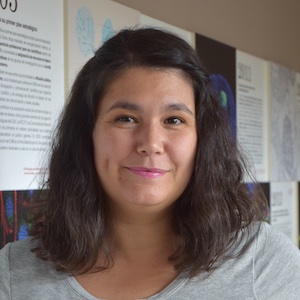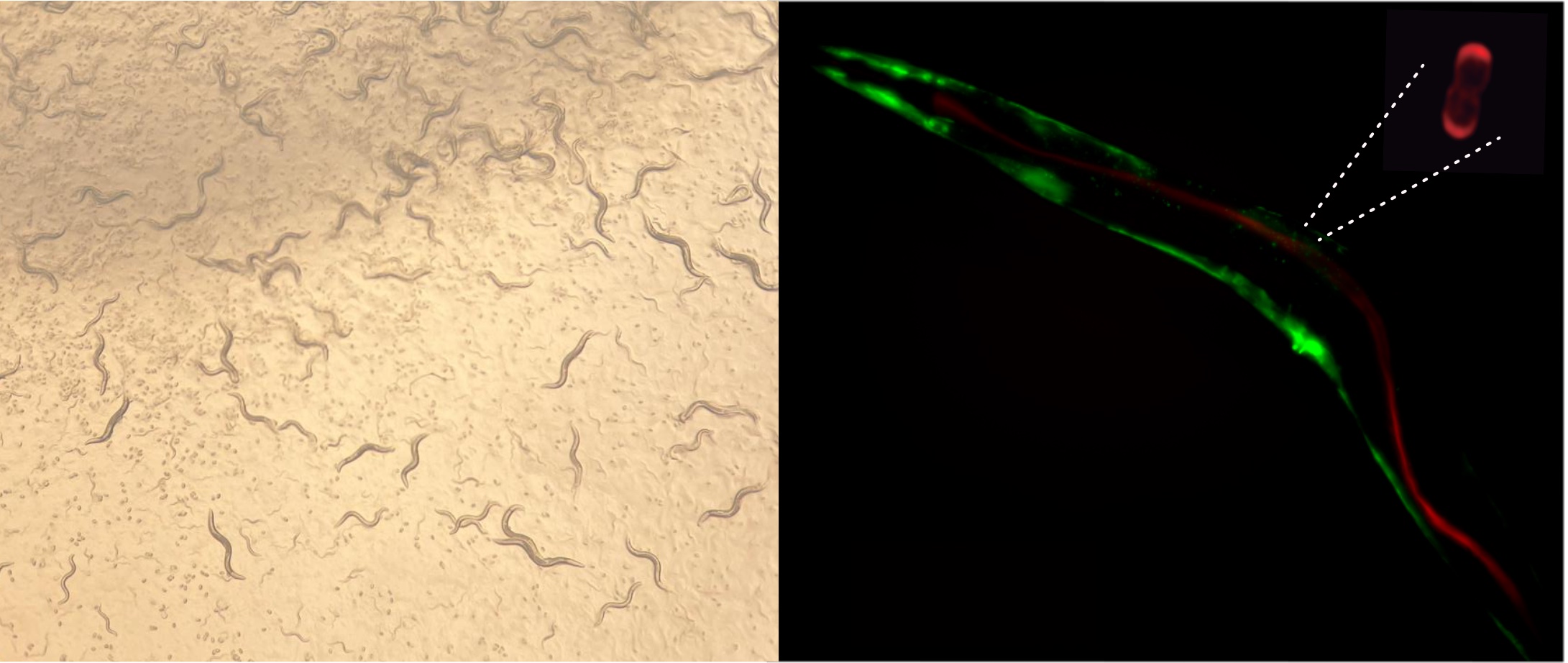Host-microbiome Interactions Along the Gut-Brain Axis
RESEARCH FELLOW

Laura Molina García
Atracción de Talento César Nombela Fellow
Research Summary
My group focuses on understanding the role that bacterial amyloids produced by the gut microbiome play in promoting neurodegeneration to help develop new therapies targeting the microbiota to prevent and or reverse amyloid deposition.
Research Lines
Multiple evidence correlates gut microbiota with the severity of symptoms in several neurological and neurodegenerative disorders including those caused by the aggregation of amyloid proteins (e.g., Parkinson’s or Alzheimer’s disease). However, the sheer complexity of the mammalian gut microbiota prevents establishing unambiguous causal microbe-disease links. Interestingly, many bacteria that are present in the human gut microbiome also produce amyloid proteins and it has been proposed that they could catalyse the aggregation of human amyloids involved in disease.
My group focuses on understanding the role that bacterial amyloids produced by the gut microbiome play in promoting neurodegeneration to help develop new therapies targeting the microbiota to prevent and or reverse amyloid deposition. Specifically, the goals of my group are: (i) to determine whether a causal relation exists between different amyloid-producing gut bacteria and the onset and progression of several neurodegenerative diseases; (ii) to identify novel targets for therapeutic intervention in both the host and the microbiome; (iii) to unravel the potential neurotoxicity of microbiome bacterial amyloids in the host nervous system and (iv) to identify interactions between bacterial communities in the gut microbiome that allow us to modulate the progression of neurodegenerative diseases. To answer these challenging questions in the lab we combine genetic engineering of gut microbiota bacteria and the unique advantages of our host model organism Caenorhabditis elegans: 1) short life-cycle and transparency, which allows protein aggregation to be visualised in living animals with high temporal and spatial resolution, 2) genetic amenability of both host and microbiota, and 3) a small and fully characterised nervous system. We are currently developing novel genetic tools to i) monitor and manipulate interspecies amyloid interactions in vivo and ii) study neurotoxicity directly elicited by microbiome-produced amyloids. This will allow us to further our knowledge on the way amyloids produced by the gut microbiome potentiate the symptoms of neurodegenerative diseases.

Caenorhabditis elegans growing on Escherichia coli bacterial lawn (left). Fluorescence image showing engineered gut microbiota bacteria in red colonizing the worm gut and C. elegans muscle in green (right).
Recent Publications
Molina-García L, Colinas-Fischer S, Benavides- Laconcha S, …, Barrios A. Conflict during learning reconfigures the neural representation of positive valence and approach behaviour. Current Biology in press.
Molina-García L, Lloret-Fernández C, Cook SJ, et al, Barrios A, Poole RJ Direct glia-to-neuron transdifferentiation gives rise to a pair of male-specific neurons that ensure nimble male mating. Elife 2020, 9(e48361):1-32. DOI: 10.7554/eLife.48361.
Molina-García L, Moreno-Del Álamo M, Botias P, et al, Giraldo, R. Outlining Core Pathways of Amyloid Toxicity in Bacteria with the RepA-WH1 Prionoid. Front Microbiol 2017, 8(539):1-21. DOI: 10.3389/fmicb.2017.00539.
Molina-García L, Gasset-Rosa, F, Moreno-Del Álamo M, Fernández-Tresguerres ME, Moreno-Díaz de la Espina S, Lurz R, Giraldo R. Functional amyloids as inhibitors of plasmid DNA replication. Sci Rep. 2016, 6(25425):1-8. DOI: 10.1038/srep25425.
Molina-García, L, & Giraldo, R. Aggregation interplay between variants of the RepA-WH1 prionoid in Escherichia coli. J Bacteriol 2014, 196(14):2536-42. DOI: 10.1128/JB.01527-14.
Group Members
Funding

News
Las Sinergias Severo Ochoa financiarán 8 proyectos colaborativos de grupos del CNB
La convocatoria interna Sinergias Severo Ochoa del Centro Nacional de Biotecnología (CNB-CSIC) financiará ocho proyectos colaborativos de grupos de investigación del centro, impulsando el desarrollo de programas transversales de alta calidad científica. Entre las...



